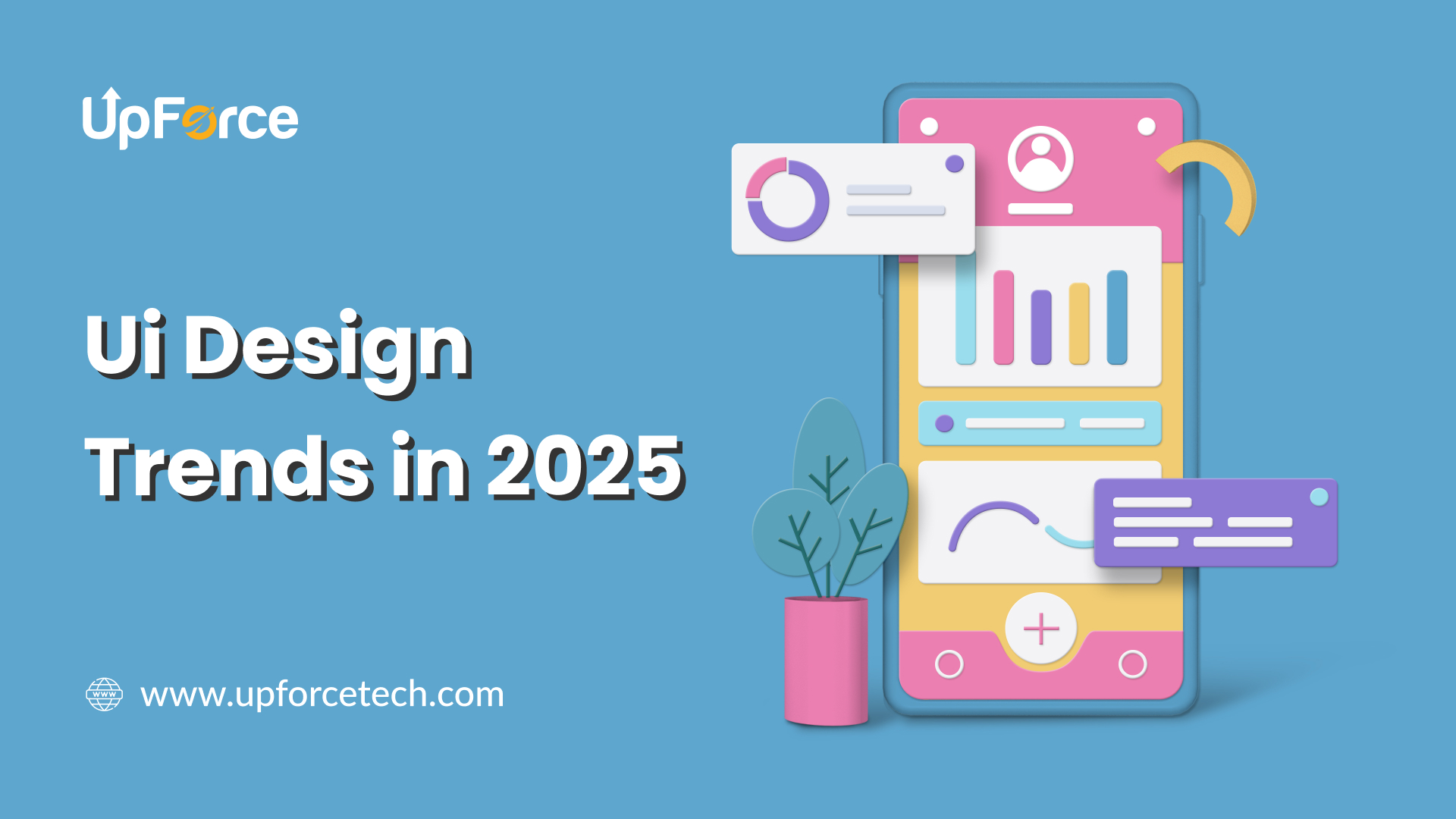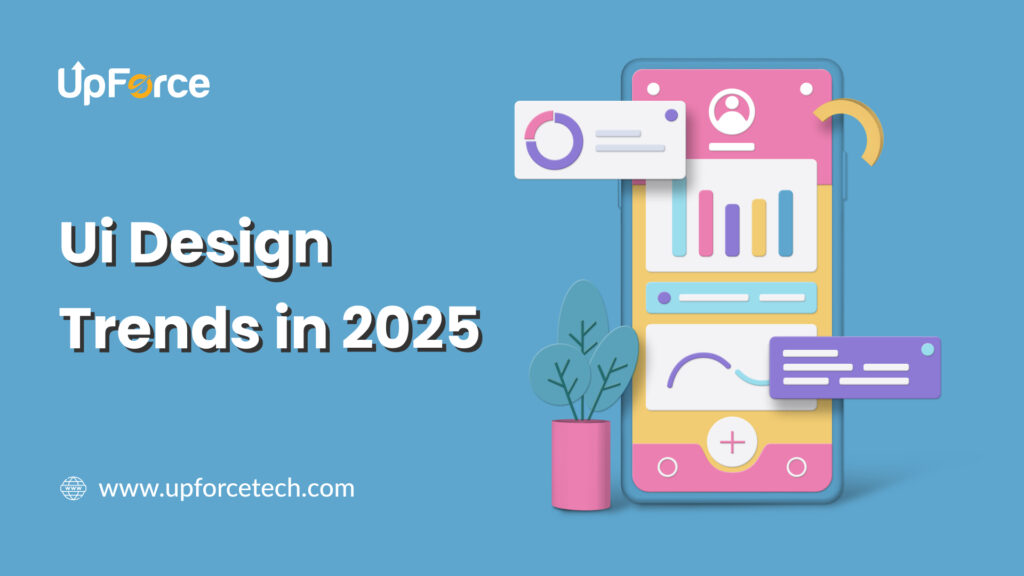UI Design Trends in 2025
Table of Contents
UI Design Trends in 2025: What’s Shaping the Future of User Interfaces?
User Interface (UI) design is where creativity meets functionality. In 2025, UI design is evolving faster than ever, driven by new technologies, changing user behaviors, and the demand for personalized experiences. If you want your digital product to stand out, embracing these trends isn’t optional—it’s essential. In this blog, we’ll explore the key UI design trends for 2025, sprinkle in some stats, and provide actionable insights to keep your designs ahead of the curve.

1. Minimalism with Depth: Simplicity Meets Sophistication
Minimalism isn’t just about “less is more” anymore. In 2025, minimalism is taking on depth with subtle gradients, layered elements, and soft shadows that create visually appealing yet uncluttered interfaces.
Why It’s Relevant:
- Improved Focus: Helps users quickly find what they need.
- Speed Optimizations: Lightweight designs enhance loading speed, improving UX.
Stat: Websites with minimalist designs see 20% higher engagement rates. (Source)
Pro Tip:
Use tools like Figma or Adobe XD to create dynamic yet minimalist designs that are lightweight and engaging.
2. Immersive 3D Graphics: Enhancing Interaction
3D design is no longer just a novelty—it’s becoming a standard for delivering immersive user experiences. From product showcases to dynamic landing pages, 3D elements captivate users and add a layer of sophistication.
Real-Life Applications:
- E-commerce Platforms: Allow users to interact with 3D models of products.
- Education Apps: Create realistic simulations for better learning experiences.
Fun Fact: Incorporating 3D elements increases user interaction by 45%. (Source)
Example Tool:
Explore Three.js for adding interactive 3D elements to your web pages.
3. Voice User Interfaces (VUIs): Hands-Free Convenience
With smart devices becoming integral to daily life, voice interactions are becoming more intuitive and accessible. Voice User Interfaces (VUIs) are streamlining navigation, making interfaces more inclusive for diverse users.
Key Applications:
- Voice-activated commands for smart homes.
- Hands-free navigation in fitness and health apps.
Stat: By 2025, 50% of online searches will be voice-based. (Source)
4. Micro-Interactions: Enhancing User Delight
Micro-interactions—those small but meaningful animations and feedback loops—play a significant role in enhancing usability. These include hover effects, button animations, and progress indicators that subtly guide users.
Examples:
- Instagram’s heart animation when you like a post.
- Loading indicators on e-commerce websites.
Insight: Micro-interactions can improve task completion rates by 25%. (Source)
5. Hyper-Personalization with AI
AI-driven personalization has become a cornerstone of effective UI design. By analyzing user behavior and preferences, UIs can dynamically adapt, ensuring a tailored experience for every individual.
Practical Applications:
- Streaming Platforms: Personalized recommendations based on viewing habits.
- E-commerce Sites: Tailored product suggestions for each shopper.
Fact: Personalization boosts user engagement by 40%. (Source)
6. Sustainability in UI Design
Sustainable design practices are no longer optional. In 2025, brands are focusing on eco-friendly designs that reduce energy consumption and promote green practices.
Key Practices:
- Optimize asset sizes to lower page load energy usage.
- Design for digital minimalism, reducing unnecessary elements.
Stat: Sustainable websites can lower carbon footprints by up to 30%. (Source)
7. Biometric Authentication: Secure and Seamless
Biometric authentication has transitioned from futuristic to essential. UI designs now integrate fingerprint and facial recognition with intuitive visuals, enhancing security without compromising user experience.
Quick Tips:
- Provide clear prompts and fallback options for failed authentication.
- Use subtle animations to make the process user-friendly.
8. Gamification in Design
Gamification isn’t just for games—it’s making its way into UI design to enhance engagement. From progress bars to badges, adding game-like elements makes interactions fun and rewarding.
Real-Life Examples:
- Language learning apps like Duolingo with streaks and badges.
- Fitness apps that reward users for completing challenges.
Fact: Apps with gamification features experience a 30% higher retention rate.
Challenges and Their Solutions in UI Design
UI design comes with its unique set of challenges. Here are five major challenges faced by designers in 2025 and actionable solutions to tackle them:
1. Balancing Aesthetic Appeal with Functionality
Challenge:
Designs that are too creative can sometimes compromise usability, leading to confusion among users.
Solution:
- Prioritize user testing to ensure designs are intuitive.
- Use feedback loops to identify pain points and iterate on designs.
2. Keeping Up with Rapidly Evolving Trends
Challenge:
The fast-paced evolution of UI trends makes it hard for teams to stay updated and implement changes efficiently.
Solution:
- Focus on trends that align with your audience and brand identity.
- Invest in continuous learning through workshops, courses, and industry meetups.
3. Achieving Accessibility Standards
Challenge:
Ensuring designs are inclusive for people with disabilities requires thoughtful planning and implementation.
Solution:
- Use tools like WAVE or Axe Accessibility Checker to test for compliance with accessibility standards.
- Follow WCAG (Web Content Accessibility Guidelines) to make designs accessible to all.
4. Integrating Advanced Technologies Seamlessly
Challenge:
Adding technologies like 3D graphics, AI, and VR without overwhelming users can be tricky.
Solution:
- Gradually introduce advanced features to prevent overwhelming users.
- Use minimalistic layouts to balance innovation and simplicity.
5. Designing for Sustainability
Challenge:
Creating designs that are both visually appealing and eco-friendly is increasingly important.
Solution:
- Optimize asset sizes to reduce energy consumption.
- Use web performance tools like Google PageSpeed Insights to monitor and improve energy efficiency.
How UpforceTech Can Help You Hire the Right Contract Developer
At UpforceTech, we specialize in connecting businesses with highly skilled contract developers who can meet their unique needs. Our rigorous vetting process ensures that you get access to the best talent, whether you need someone with expertise in front-end development, back-end systems, or mobile app development.
Here’s how UpforceTech can support your business:
- Access to a Global Talent Pool: We provide access to a diverse range of developers from around the world, ensuring you find the right fit for your specific project needs.
- Customized Hiring Solutions: Whether you’re looking for short-term contract developers or long-term project-based teams, we tailor our services to fit your requirements.
- Quality Assurance: Every developer in our network goes through a comprehensive screening process to ensure they have the necessary skills and experience to deliver high-quality work.
- Ongoing Support: Our commitment doesn’t end with hiring. We offer ongoing support to ensure a seamless integration of contract developers into your team.
For more information on how to get started with hiring contract developers, visit UpforceTech.
Are you looking to Grow your business with skilled developers? Hire a contract developer today to bring fresh ideas and expertise to your team. Learn how UpforceTech can help!
Sign up for the free Newsletter
“UI design is not just about aesthetics; it’s about creating a conversation between users and technology.”
UpforceTech
FAQs
AI-driven personalization and immersive 3D graphics are leading the way.
It reduces eye strain, saves battery life, and appeals aesthetically.
They provide feedback, enhance usability, and make the experience engaging.
It focuses on reducing digital energy consumption and promoting eco-friendly practices.
Start small—introduce minimalism or AI personalization in your designs.
Tools like Figma, Adobe XD, and Three.js are popular for 2025 trends.
While effective, gamification works best in apps with long-term user engagement goals.
E-commerce, education, and real estate platforms can gain significantly from immersive 3D graphics.

